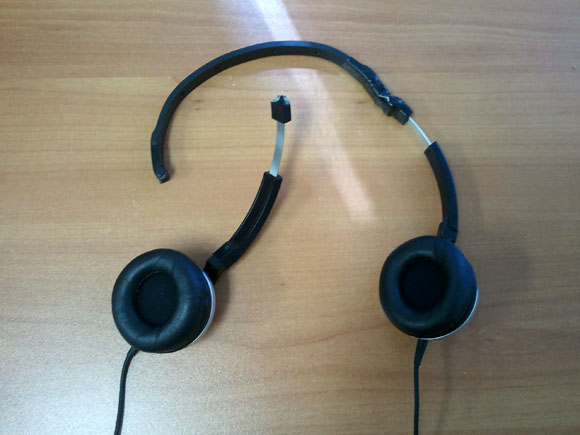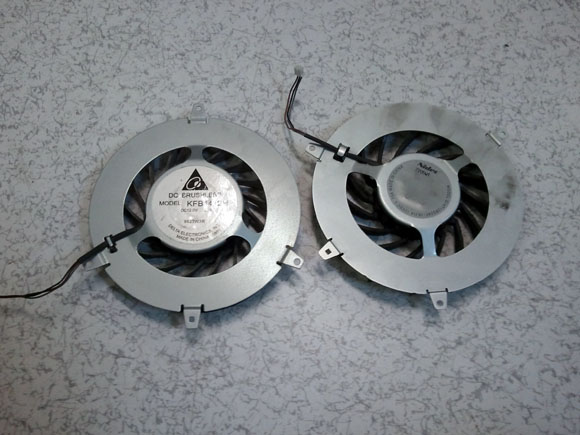I withdraw my endorsement of Audio-Technica's
ATH-ANC1 headphones.

Fatigue failure of first one, then the other
earphone support
Barely a year after I bought and first wrote about them, one
earphone broke free from the headband; when I temporarily fixed this
with electrical tape I was rewarded with about two weeks of
additional service before the other earphone failed in exactly the
same way. More galling than Audio-Technica's lack of attention to
fatigue design, however, was their lack of attention to customer
service—representatives of the company refused to make any
replacement parts available and, since I was just outside of the
warranty period, insisted I send them my headphones and pay more
than half the price of a new unit to have them repaired. Nonsense!
Instead of dealing with Audio-Technica anymore, I took this as an
opportunity to try out a technique I read about in
Make magazine: fixing delicate plastic parts, such as the broken
bridge of an eyeglass frame, by wrapping the joint with thread and
coating it in epoxy, making a kind of thread-reinforced composite.

